Students:Group Five: Filip, Lucie H, Karolina, Ivona
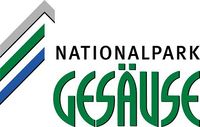

The last day of our field trip we visited Geasause National Park, which is near Eisenerz, the town we spent our time in the day before. It’s obvious that the weather in the mountains changes very often and it‘s raining a lot. Sadly, that day wasn’t an exception. Our guide in the national park was a very friendly woman from the department of environmental education. She showed us a presentation about the park, the preservation of nature, special projects and cooperation with partners. Her English was easy to understand.
Day Five: Visit to Gesäuse National Park
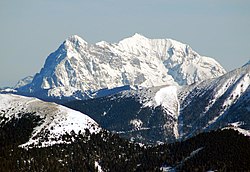
Gesäuse National Park is located in central Austria in the north of Styria province. It’s the youngest one out of the six Austrian national parks (founded in 2002) and with its area of 11,054 ha is the third largest. Half of the area is covered by forests. It‘s situated in the Ennstal Alps, which is a mountain range of limestone and dolomit origin. It’s been very popular among climbers for over 100 years. The character of the valley is formed by the river Enns that cuts through the mountains. The total length of this river is more than 200 km and its mostly regulated and modified by humans, except the part that flows through the park. The unchanged natural character and dynamics of the river, steep mountain ranges and huge differences in height provide suitable living conditions for endangered and rare species of plants and wildlife and high diversity of habitat. Each year the park welcomes over 30,000 visitors from all over the world and many of them are from abroad. We were quite surprised, that our guide said international visitors are often more enthusiastic and consider it even more important then local visitors!
Emphasis on education
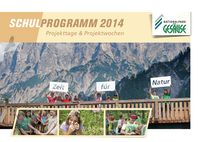
The organisational structure of the park consists of 4 departments, of which the department for environmental education was emphasized the most. It’s because education is a crucial step toward making the issue of nature conservation more familiar to visitors, students and children. There are many target programs for the public as well as for schools. The park employs about 30 national park rangers who work in the field and organise excursions for the public and ranger training courses for children (junior ranger project) and adults, too. Other programs are targeted at the local population (botanical and wildlife excursions) and schools (partner schools are going to take lessons about the NP - 2 hours a week). Besides education, communication and cooperation with representatives from the departments of environmental education of other Austrian national parks is important; they meet 3 times a year.
What we really liked is the way that employees of the national park educate children, schools and the public. They do it in a very attractive and interactive way; it’s something very different from boring informational tables full of text that are read only by really interested people. Sadly, this system is still mainly the case in the national parks of the Czech republic. We should be inspired by NP Gesause where classes and families are attracted by observing small insects under the microscope, walking in a labyrinth of an ecological footprint, listening to the story of a tree or river, watching 3D movies or using an application for smart phones - Gesäuse App - which is not finished yet but is going to contain information about the NP related to geography. There are also 2 trails that are open from the beginning of May to the end of October, and a pavillon with a geological museum and a restaurant.
The national park and sustainability
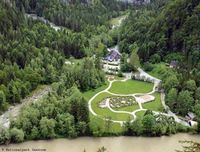
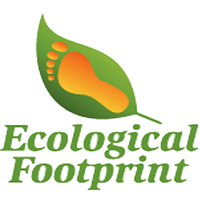
The activities of the NP are closely focused on issues of sustainable development, particularly integrating the concept of sustainable development into education for children and the public as well. Within the UN Decade of Education for Sustainable Development, the park has accredited projects such as junior rangers or the ecological footprint. The ecological footprint is a big labyrinth in the shape of a foot. Each person who enters the labyrinth will be able to get out of it only if he correctly answers the questions about a sustainable way of life that are placed on signs all over the labyrinth. It’s a very nice way how to introduce the issue to people who have never heard about it. An interesting way to educate children and the public about their personal impact on the capacity of the planet is a footprint calculator which was demonstrated by the guide during the presentation to visitors and everyone can calculate their contribution. The national park itself has been accredited with the Austrian ecolabel, which means that its activities are sustainable and nature friendly. Advanced visitor management is responsible to keep enough space for plants and wildlife using pictures of a locally protected bird with its youngsters - we think it’s a very effective way to alert tourists.
Critique
We would appreciate if the excursion was less theoretical. The presentation was really interesting and gave us all important information, but due to a lack of time and rainy weather, we missed the chance to take a walk in the park to personally witness its beauty. However, the high mountains all around were truly breathtaking. Despite the fact that park is visited by a considerable number of international visitors, the most interesting interactive and educative attractions are only in German. On the other hand, we appreciated the leaflets in different foreign languages, including Czech.
Links to Czech National park sites
- Krkonošský národní park
- Národní park Šumava
- Národní park Podyjí
- Národní park České Švýcarsko 1
- Národní park České Švýcarsko 2
The diary was written by Lucie Hadáčková. The final assignment is supposed to be done by the rest of the group...
Comparative Study
Introduction
We would like to compare the youngest park in Austria, the Gesäuse National Park, which was founded in 2002, and the youngest national park in the Czech Republic, České Švýcarsko [English: Czech Switzerland], which was founded in 2000. Both of them focus their activities on education.
České Švýcarsko National Park
České Švýcarsko National Park is devoted to ecological education. For children, youth and adult organisations it stages a lot of interesting activities with ecological themes. Teachers can make organized field trips and school trips to the national park. It is suitable for all types of ages of children from preschool children to youth. All field trips are free for schools. Children work on paper, but there are practical activities too - like types of pH, climatic temperatures, etc. You can choose from seven types of field trip, for example: A Forgotten Region of Rock Pinnacles and Ravines, The Picturesque Pavlina Valley, A Bird's Eyeview over the Jetřichovický Observatory, From a Salmon to a Water Mill Full of Fairytales, In the Footsteps of Extinct Species of the Czech Switzerland, The Medieval Castles of the Kyjovsky Valley, and Excursions and Trips To Order (according to the wishes of the customer).
The park publishes a magazine about ecological education in the national park. The magazine´s name is Výří zprávy which is dedicated to ecological education in the national park. The magazine is published once a one month. This magazine information is for teachers and people involved in environmental education, training and awareness (EETA) and people interested in ecological education about news relating to EETA in the national park. The magazine contains eco activities which teachers can use in their lessons and informs them about activities in the park.
Children can spend their free time in the ranger unit. The ranger unit was renamed in 2010 and cooperates with the international project Junior Ranger Project. The main activities of this unit are the nature of the national Park, conservation and landscape, games, camping, health science, etc. Lectures are held and interactive programs for children and youth offered in the park. You can also get a part time job in looking after the park's nature.
Gesäuse National Park
The Gesäuse National Park is divided into four parts - the Department of Nature Conservation and Research, the Department for Forestry and Management, the Department for Communication, and the Department for Environmental Education. We will concentrate on the last one. In the park, one can choose from many educational programs, for example, the Lettmair Au path, the Rauchbodenweg themed path and the Sagenweg themed path. There are many targeted programs for the public, as well as for schools. The park employs about 30 national park rangers who work in the field and organise excursions for the public, and ranger training courses for children (junior ranger project) and adults, too. Other programs are targeted at the local population (botanical and wildlife excursions) and at schools (partner schools are going to take lessons about the NP - 2 hours a week). Besides the education, communication and cooperation with representatives from the departments of environmental education of other Austrian national parks is important; they meet 3 times a year. The park employees concentrate their activities on working with universities and other research workplaces. There is a research workplace situated in the Weidendom, and through the "Journey to Microcosm Nature" children can see nature much more extensively. Visitors can get the Gesause smart phone app from Apple, which we haven’t seen in Czech Republic yet. The employees of the Austrian park offer relaxation programs, for example, by building a porch from willows when people can relax and enjoy it. They have Christmas markets there in December where people can buy products from 15 stalls. The national park has a special building which is inspired by the example of nature, which is called Pavillon Gstatterboden where there is geological exhibition. The exhibition is not boring because it is interactive and visitors can try everything like climbing an artificial wall, etc. In this building, people can spend time relaxing in the restaurant or buying some presents.
Summary
Goals both of the parks provide education for children, youth and adults, and protect the parks' natural environment. The park employees offer many educational programs for school and provide the public, for example, with field trips, lectures, etc. We consider the Gesäuse National Park to be a little bit more modern for the public than in the Czech Republic. Although conservation and education in the Czech republic for all students at school level and the general public is now greatly expanded in national parks, we need to learn a lot from Austria.
(Completed the rest of the group - Ivona Janecká, Karolína Vlčková and Filip Pokorný).